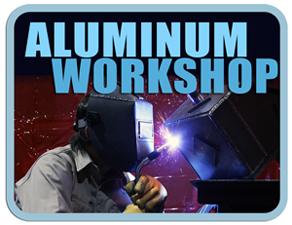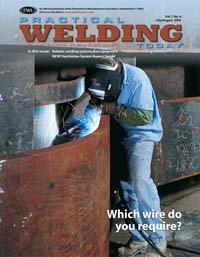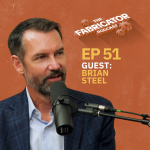President
- FMA
- The Fabricator
- FABTECH
- Canadian Metalworking
Categories
- Additive Manufacturing
- Aluminum Welding
- Arc Welding
- Assembly and Joining
- Automation and Robotics
- Bending and Forming
- Consumables
- Cutting and Weld Prep
- Electric Vehicles
- En Español
- Finishing
- Hydroforming
- Laser Cutting
- Laser Welding
- Machining
- Manufacturing Software
- Materials Handling
- Metals/Materials
- Oxyfuel Cutting
- Plasma Cutting
- Power Tools
- Punching and Other Holemaking
- Roll Forming
- Safety
- Sawing
- Shearing
- Shop Management
- Testing and Measuring
- Tube and Pipe Fabrication
- Tube and Pipe Production
- Waterjet Cutting
Industry Directory
Webcasts
Podcasts
FAB 40
Advertise
Subscribe
Account Login
Search
Aluminum Workshop: Inverter versus transformer power supplies for aluminum GTAW
- By Frank Armao
- August 28, 2003
- Article
- Aluminum Welding
Q: I'm looking for a new GTAW power supply for AC aluminum welding. I had intended to buy a conventional transformer unit, but several people have told me to buy an inverter-based power supply. Which one is better for my application?
A: Inverter-based power supplies do have some advantages over conventional transformer-based power supplies. However, some of these advantages have been overstated and others are not significant to all users. So let's examine the differences between inverters and conventional transformers in detail.
Before beginning, I want to make it clear that most inverter GTAW power supplies produce only DC current. Few produce the AC normally used for GTAW of aluminum alloys. These tend to be more complex and more expensive than DC-only inverters.
Size and weight. Inverter power supplies are smaller and lighter in weight than transformer power supplies. The typical 300-amp transformer supply weighs 200 to 400 lbs., while a 300-amp inverter supply usually weighs 30 to 50 pounds. The inverter also has a smaller footprint, so in general, it's more portable. This is important if you want to weld aluminum architectural trim on top of a roof. However, if you have a shop and put your welding machine in one place and never move it, portability isn't important.
Input power. Most conventional transformers require 208/230 or 460-volt, single-phase input power. Inverter power supplies also can function on these input voltages. However, many inverters will function on 115-V, single-phase input power at reduced capacity, about 100 amps maximum. This is an advantage for those who desire a portable power supply, but isn't for those who don't move their power supply around a lot.
Efficiency. Inverters are more efficient than transformers. A conventional GTAW power supply takes 60-Hz input power and transforms it to low-voltage welding power, either 60-Hz AC for welding aluminum or DC for welding other metals.
An inverter power supply takes 60-Hz input power, rectifies it, then inverts it to AC of 8,000 to 25,000 Hz before transforming it to low-voltage welding power. The fact that the inverter is working with higher-frequency AC makes it more efficient. This means that, all other things being equal, the inverter power supply will be cheaper to run than the conventional power supply.
However, the difference in operating cost has been overstated in some cases. In an article written a few years ago, the author said that the cost of a new inverter power supply can be paid off in 14 months of decreased electricity cost. However, there was one problem with this number. The decimal point was misplaced. The numbers really showed that the cost of the power supply could be offset by 140 months of reduced electricity cost.
Yes, inverters cost less to run, but the cost differential by itself isn't enough to justify buying new power supplies.
Purchase cost. Inverter power supplies are at a disadvantage here. Inverters, especially AC inverters, are more complicated to manufacture and generally cost more than conventional power supplies of similar capacity.
Everything I've said so far applies to both AC and DC power supplies. So what are the specific advantages of an AC inverter for GTAW of aluminum alloys? Basically, there are three:
1. No need for continuous high frequency. Inverters produce AC in a fundamentally different way than transformer-based power supplies do. While conventional power supplies require that high frequency be used continuously to stabilize the arc, most inverters do not.
Instead, high frequency only strikes the arc, resulting in several advantages. First, this means that the opportunity for the high frequency to produce RF interference or to damage delicate electronics in the area is less. Second, the arc is more stable. Third, there is no chance of the high frequency etching the grain boundaries in the heat-affected zone (HAZ). This often is discovered in liquid penetrant inspection, in which the etching looks like myriad fine cracks.
2. AC frequency is variable. Inverter power supplies allow the frequency of the AC output to vary. The range of AC frequencies usually is from about 20 Hz up to 200 Hz. This is an advantage because as the AC frequency is increased, the arc becomes stiffer and the arc cone narrows. The narrower arc cone deposits a smaller, or narrower, weld pass than can be deposited using 60-Hz AC. This is an advantage when welding thin aluminum or when weld aesthetics are important.
3. Inverters offer an expanded balance range. In AC GTAW, weld penetration comes from the electrode negative (EN) portion of the AC and arc cleaning comes from the electrode positive (EP) portion of the AC. However, the more EP we use, the more arc energy goes into heating the tungsten electrode. This is why we use large-diameter, balled tungsten electrodes for AC welding.
We found out many years ago that we don't need 50 percent EP to obtain good arc cleaning. In fact, most conventional GTAW power supplies provide good arc cleaning with as little as 30 percent EP. Inverters have taken this a step farther. Many inverters provide good arc cleaning with only 15 percent EP in the arc. With only 15 percent EP, we put less heat into the tungsten electrode, which lets us use a smaller-diameter, sharpened tungsten.
Smaller GTAW torches can be used, which are more convenient for the operator. In addition, the sharpened tungsten electrode narrows the arc, producing smaller, more aesthetically pleasing welds than can be produced with a balled tungsten.
Is there an inverter-based GTAW power supply in your future? That depends. If you need the portability, or if you weld relatively thin aluminum in an industry in which weld appearance is of primary importance, the benefits may outweigh the added equipment cost.
If you weld primarily heavy aluminum in an industry in which appearance is not that important, you may be better off with a conventional transformer-based GTAW power supply.
About the Author

Frank Armao
Aluminum Consulting Inc.
440-479-0239
About the Publication
Related Companies
subscribe now

The Welder, formerly known as Practical Welding Today, is a showcase of the real people who make the products we use and work with every day. This magazine has served the welding community in North America well for more than 20 years.
start your free subscription- Stay connected from anywhere

Easily access valuable industry resources now with full access to the digital edition of The Fabricator.

Easily access valuable industry resources now with full access to the digital edition of The Welder.

Easily access valuable industry resources now with full access to the digital edition of The Tube and Pipe Journal.
- Podcasting
- Podcast:
- The Fabricator Podcast
- Published:
- 04/09/2024
- Running Time:
- 63:55
In this podcast episode, Brian Steel, CEO of Cadrex Manufacturing, discusses the challenges of acquiring, merging, and integrating...
- Industry Events
16th Annual Safety Conference
- April 30 - May 1, 2024
- Elgin,
Pipe and Tube Conference
- May 21 - 22, 2024
- Omaha, NE
World-Class Roll Forming Workshop
- June 5 - 6, 2024
- Louisville, KY
Advanced Laser Application Workshop
- June 25 - 27, 2024
- Novi, MI
































